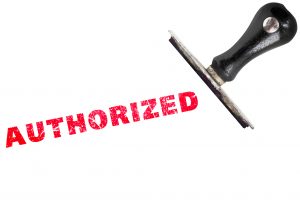7 Ways to Increase Credit Scores

6 Common Causes For Credit Report Errors
October 20, 2022
7 Ways to Increase Your Credit Scores
Is your credit score the only thing standing between you and a mortgage on the home of your dreams? Having low credit can be expensive in ways people don’t often consider. It can lead to higher interest rates or even denials for loans and mortgages. Thankfully, it is pretty easy to nurture your score back up into those higher numbers with a few simple actions. While it may take time to see the numbers you want, following these steps can be a great push in the right direction to good, or even excellent credit.
Here is the first way to increase your credit scores….
1. Check Your Credit Report First
 Before you panic at that low number, do a credit check. You can get free credit reports annually from AnnualCreditReport.com and then look over everything. Does it look accurate? Are there missed payments, collections, or closed accounts bringing your score down? Do you have accounts missing that should be there? Is everything correct with your credit limits?
Before you panic at that low number, do a credit check. You can get free credit reports annually from AnnualCreditReport.com and then look over everything. Does it look accurate? Are there missed payments, collections, or closed accounts bringing your score down? Do you have accounts missing that should be there? Is everything correct with your credit limits?
2. Lower Credit and Loan Balances
Most people know that making on-time payments is essential for their credit. But, the amount of debt carried is just as important. Minimum payments and maxed-out lines spell disaster for your credit. Once you know where your credit stands, lower your credit card and loan balances. Revolving accounts, like credit cards, tend to have more weight on your credit score than installment loans, but the less you owe and the more available credit you have, the better your score will be. All credit cards should have less than 25% utilization reported on statements for best results. And whatever you do, don’t max out your credit cards!
Another key point to boost your scores…
3. Become an Authorized User
If you have a family member, such as a parent, who has great credit, consider asking them to add you as an authorized user. You don’t even need to keep the card; only add yourself on it and reap the benefits of the owner’s payment history on that card.
4. Dispute Old Negatives
If you notice that you have old negatives on your accounts, such as medical bills the insurance company never paid, or even old collections accounts, you can dispute them. For older and smaller collections amounts, there’s a good chance they won’t have the records, and once those are removed, you may see an increase in score.
For the most part, Steps 4 and 5 may cause you many headaches, but do them anyway…
5. Dispute Errors
If you notice any errors on your credit reports, you can dispute those as well with the credit reporting bureaus. Common errors include incorrect names and addresses, late payments, and collections. If you paid as agreed, dispute anything that says otherwise. You can also dispute any negatives older than 7 years or any accounts that are unpaid after being included in a bankruptcy. Mistakes happen and they can be fixed if you report them.
6. Pay for Deletes
If there are genuine negatives on your account, don’t fret! We all go through hard times now and again. You can often remove debts by requesting a pay-for-delete. Get an agreement in writing saying that the company will delete the debt as soon as you pay them.
7. Ask for Forgiveness
Finally, if you had a small blip that caused some missed payments for long-time credit lines, you can sometimes ask for forgiveness from the creditor. Sending a goodwill letter can request that the creditor forgive (i.e. remove) the missed payment from your record. It’s not guaranteed, but the worst they can do is say no to your request. At best, you get the benefit of an improved score.
Following these 7 tips are sure to help you achieve some results.
Need help with increasing you credit scores? Be sure to contact us here.




